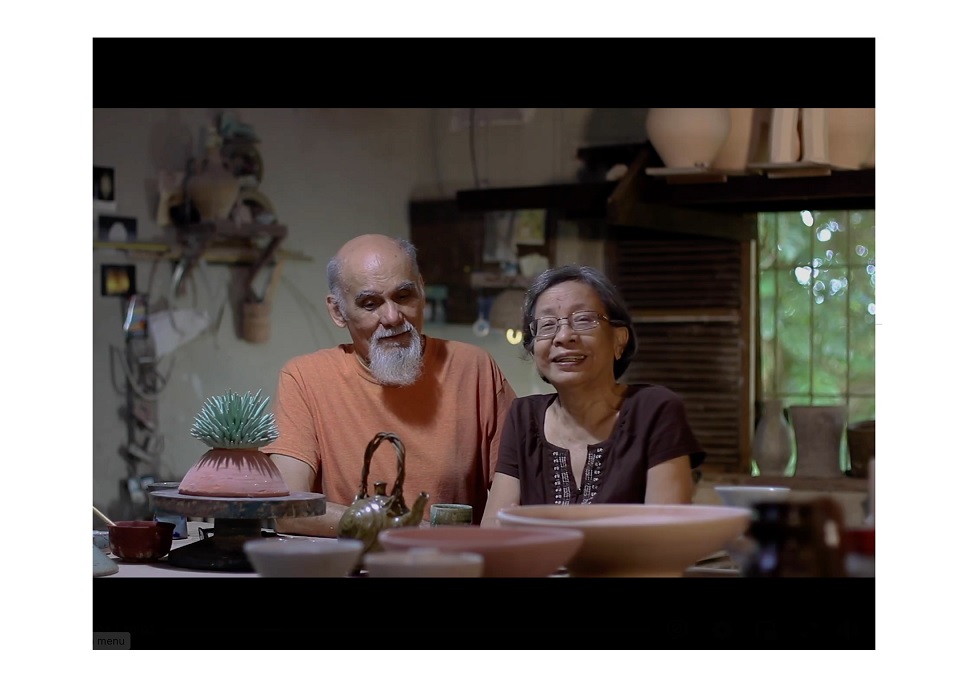Images courtesy of Art Lounge Manila, R.C. Ladrido, and Cavity Collective
When street art, graffiti, and surrealism converge and fueled by the indelible imprint of Japanese manga, anime, cartoons, and video games—the emergence of Filipino artists engage in pop surrealism remains inevitable.
Some of these artists have also monetized their works into wearable art: clothing, t-shirts, bags, accessories, toys, and novelty items.

From L.A. to Manila
Pop surrealism or lowbrow art emerged in the late 1960s in Los Angeles, California and the West Coast, rooted in the underground comix scene, punk, and hot rod culture of the United States.
Countercultural in its trajectory, pop surrealism is seen as a populist art movement in response to the elitist nature of contemporary art. It incorporates, street art, graffiti, illustration, and a diverse mix of influences, challenging conventional notions of what constitutes “good art.”
Drawing heavily from popular culture (comic books, pulp magazines, science fiction, Disney icons, Hollywood, superheroes, tattoos, and video games), the internet and its digital subcultures have extended a new and vibrant life to pop surrealism.

Kanto-kalye dreams
In a recent exhibit (Street Dreams: The Art of Pop Surrealism, Art Lounge Manila) of 50 Filipino artists and their pop surrealist works—some common elements stand out: doll-like figures, wide-open eyes, dreamy or blank faces, marionette characters, cartoonish portraits, anthropomorphic cats, monkeys, tigers, and other animals overlayed with sharp humor and a touch of irony. Strong in storytelling, it often elicits an amused grin from viewers.
Aside from whimsical and irreverent imagery, a strong dose of childhood nostalgia is pervasive, drawing on innocence, naivete, and fantasy. At the same time, such dreamy images are disrupted by unsettling details.
Some artists included in the Street Dreams exhibit:

Jomar Delluba: Based in Pangil, Laguna, figuration dominates his works with a twist, using familiar masterpieces of fine art (portraits of Van Gogh, Frida Kahlo, Salvador Dali), or paintings such as The Scream, Mona Lisa, Pygmalion and Galatea with pop art elements to convey the lives and feelings of everyday people going through their day.
Delluba’s portraits of historical figures using 21st century gadgets are imbued with satirical humor expressed through the eyes of his subjects, looking annoyed, bored, frustrated, or defiant. They are based on the works of historical painters in the west, and convey his style of satire and comedy. (Periodic Parodies, 2023).
Garapata: Dex Fernandez’s (b. 1984) iconic creation, the Garapata is a six-legged head named after a parasite, a tick or flea. For him, it is a symbol of Filipino resilience.
A fine arts graduate (2005) who majored in advertising at the Technological University of the Philippines, Fernandez had worked as a graphic artist and muralist overseas before coming home in 2007, and began working as a fulltime artist.
A recipient of the Thirteen Artist Awards of the Cultural Center of the Philippines in 2013, he has participated in the 2016 Singapore Art Biennial.

Lean Reboja (b.1991): A fine arts graduate, he majored in studio art (2013) at the University of the Philippines Cebu. Born in Davao, he has been based in Cebu since 1999.
As a child, he was always drawing. Today, a nightmare bestiary of fierce animals and monsters set against vivid hues of orange and red, populate his work.

John Mhar Santos: In 2020, he won first prize for his work Foresight in the 53rd National Shell Students Art Competition in the oil/acrylic category. The following year, he won another first prize in the 16th GSIS National Art Competition, in the representational category. His winning oil painting, titled Parcel No. 143 depicts a delivery guy, in a bright yellow shirt, holding a brown bag, and covering his head against the rain with a cardboard box. He studied at La Consolacion University Philippines.

Mimaaaaaaaaw: Her works focus on playful, and distorted images of cats, with a short quotation to spread hope and positivity.
Her pet cats (with names like Charcoal, Dilim, Ashley) keep her company, and her nom de guerre came as a random idea based on how she calls her own cats, or any cats in the streets for that matter. By 2018, she started painting cats, and called herself Mimaaaaaaaaw (with eight A’s). The short quotes in her works was initially a reminder, an encouragement to herself. Viewers find them quite relatable.
The inner world
For these artists, it is their way of interrogating the world on their own terms. By sharing their own stories visually, communication is alive and well in their artmaking.
Behind the playful images of pop surrealism lie the dysfunction of everyday existence in the megapolis, with its cultures and traditions, and the socio-economic situation where conspicuous wealth is flaunted casually amidst extreme poverty.





